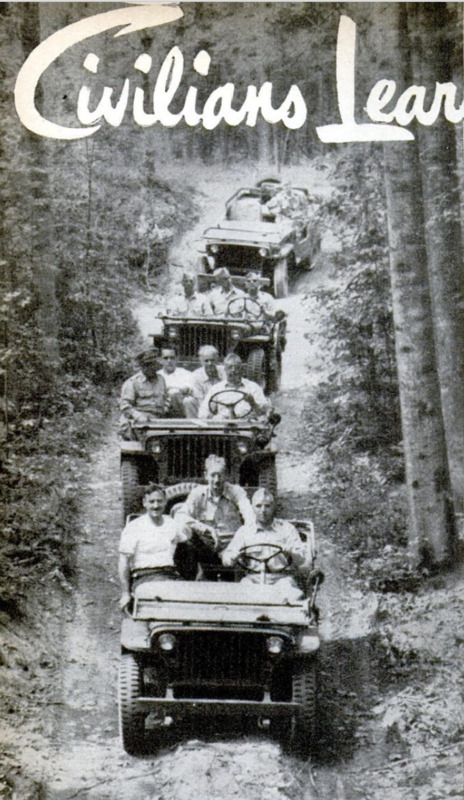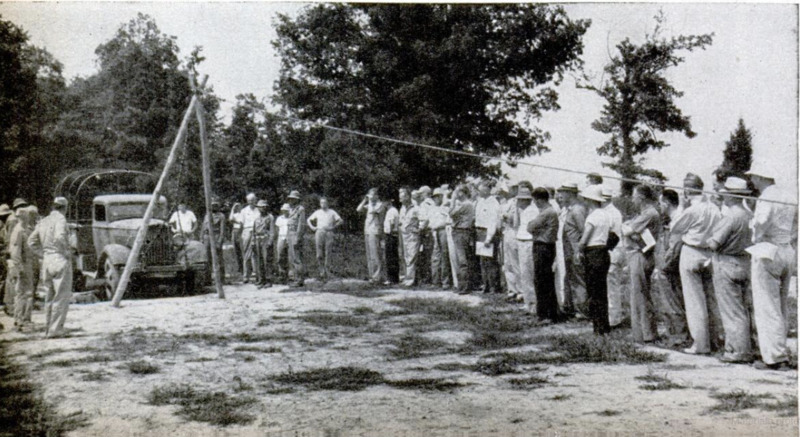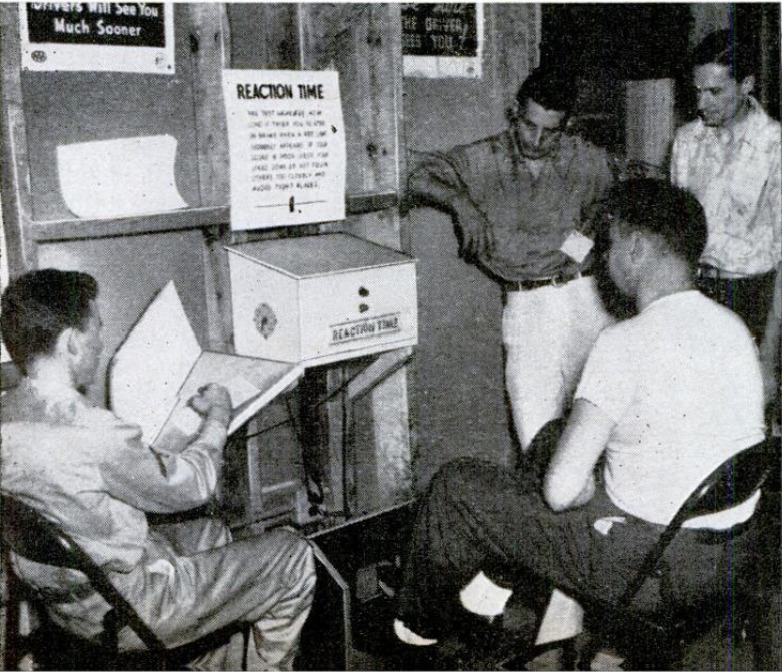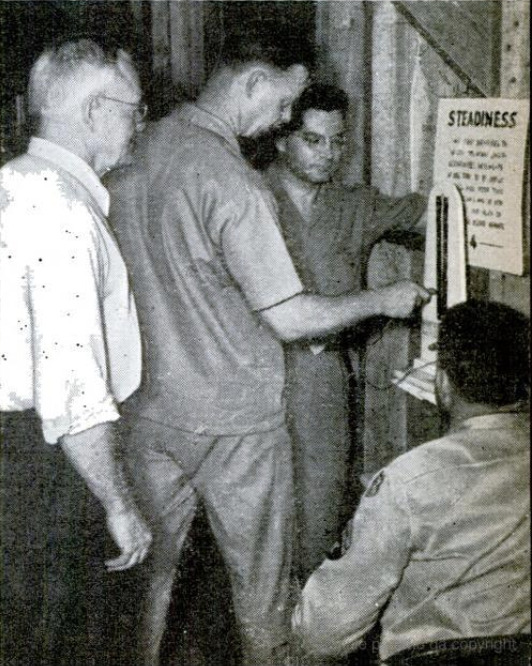A civilian-military collaboration program to make better drivers
Item
-
Title (Dublin Core)
-
A civilian-military collaboration program to make better drivers
-
Article Title and/or Image Caption (Dublin Core)
-
Civilians learn to drive cars the Army way
-
extracted text (Extract Text)
-
OUR driving habits are in for a
healthy change. The Army is
shaping them to meet the urgent
needs of a force on wheels that can
be depended upon to get troops and
equipment to the right place at the
right time. Good driving is a must
for soldiers, and the Army has called
on our civilian front to produce more
driver material. We must learn to
drive the Army way.
The Army's new program—the
first intensive collabcration between
civilians and the armed forces to
make better drivers—is® primarily
for high-school and college students.
But it challenges all who drive motor
vehicles. It aims to teach prospective
soldiers what they have to know to
man military transport, and to that
end Army driving instructors send
Jeeps over cross-country courses as
civilian passengers hang on and
strive to learn how it’s done.
Instructors test the reaction of
civilian drivers to see how long it
takes them to step on the brake
when a red light suddenly flashes,
and their ability to make smooth,
coordinated movements is measured
by the way they manipulate special
apparatus. Originating in the office
of the Quartermaster General in
Washington, the program got under
way last fall when 115 civilians from
20 states attended courses at Camp
Lee, Va., and Fort Francis E. War-
ren, Wyo. They were put through
the works for three days, driving
jeeps, trucks, and half-tracks over
all kinds of terrain, making emer-
gency repairs, learning map-reading
and camouflage, and taking notes
at lectures covering all other phases
of military driving.
These civilians returned to their
home states with knowledge that
they passed on to educators and
motor associations. Today hundreds
of high schools throughout the coun-
try have added courses in Army
driving to their curriculums. Among
the subjects stressed are the im-
portance of motor vehicles in Amer-
ica at war; how mechanisms work
and what the controls do; how
physical and mental factors affect
driving; and how to drive in black-
outs, dim-outs, and convoys. The
responsibilities of civilian and mili-
tary drivers are emphasized.
Instructors are selected from
among teachers. Those who wish to
receive special training in the war-
time phases of driving find scores of
safety centers and motor associa-
tions eager to help them. These
groups are co-operating closely with
the Quartermaster Corps, which sup-
plies instruction manuals containing
the latest preinduction training in-
formation. —JACK O'BRINE.
-
Contributor (Dublin Core)
-
Jack O'Brine (article writer)
-
Language (Dublin Core)
-
eng
-
Date Issued (Dublin Core)
-
1944-04
-
pages (Bibliographic Ontology)
-
134-135
-
Rights (Dublin Core)
-
Public Domain (Google digitized)
-
Archived by (Dublin Core)
-
Lorenzo Chinellato
-
Marco Bortolami (editor)
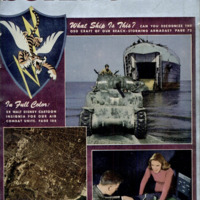 Popular Science Monthly, v. 144, n. 4, 1944
Popular Science Monthly, v. 144, n. 4, 1944

